London's Thames Barrier marks 40th anniversary
- Published
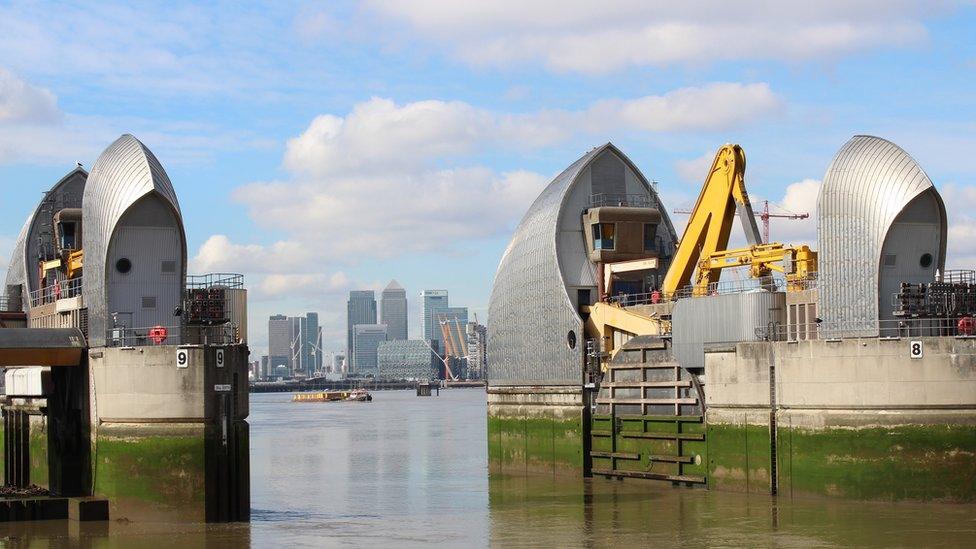
In its 40 years of operation, the Thames Barrier has been closed 221 times to prevent flooding in the capital
London's flood defence walls will need to be 50cm (20in) higher in the future to protect against climate change, officials have said as they marked 40 years of the Thames Barrier.
The barrier, officially opened by Queen Elizabeth II on 8 May 1984, was designed to protect London from flooding until 2030.
It is now expected to function until 2070.
It has been closed 221 times to prevent flooding in the capital.
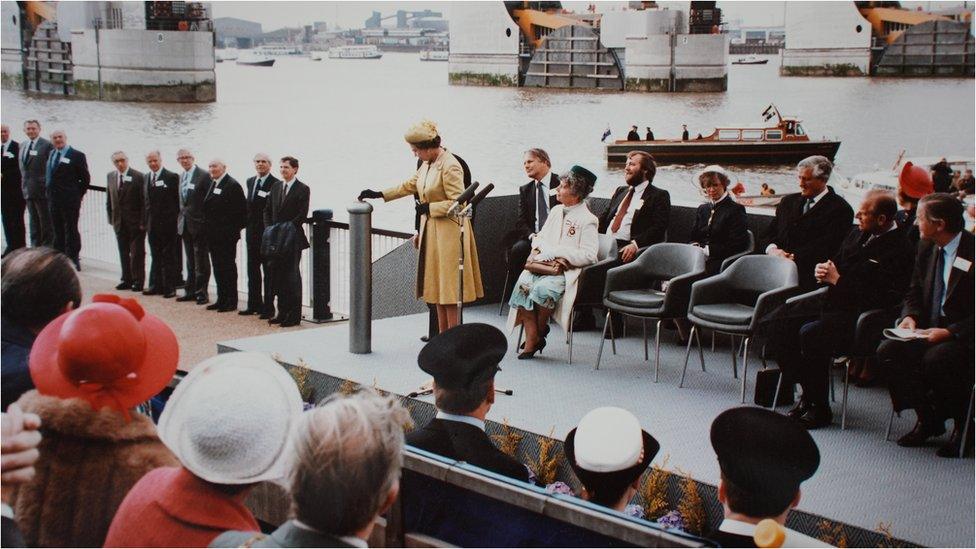
The barrier was opened by Queen Elizabeth II on 8 May 1984
Without the barrier, which is downstream from Greenwich and close to City Airport, officials said storm surges and frequent tidal flooding of the Thames would submerge buildings along the river, risking lives and livelihoods and causing huge amounts of damage.
It protects 125 km sq (31,000 acres) of central London, encompassing almost a million-and-a-half people, four World Heritage sites, more than 4,000 listed buildings, and more than 300km (185 miles) of major roads.
The 40th anniversary also marks the final day in the job for Andy Batchelor, who has been the Thames Barrier's operations manager for 25 years.
He started a new job at the site on the day it was opened by the late Queen.

Andy Batchelor, who has been operations manager at the barrier for 25 years, says he is proud of the "protection it has provided" for the capital
Mr Batchelor said: "Having witnessed and worked on the Thames Barrier's opening, I am immensely proud of the protection it has provided London for the past 40 years and will continue to provide for years to come.
"Its reliability and effectiveness demonstrate the sophistication of its design by a very talented group of engineers and the continued maintenance and operation carried out by the barrier team."
He said of the barrier: "It's like the sleeping giant, it rolls into action, it wakes up when that is needed."
Steve East, who works to maintain the barrier, said "it's a constant job".
"The barrier is a complex electrical, mechanical and civil installation," he said. "Maintenance and improvements to it are a 365-day-a-year role."

Tom Edwards, BBC London transport and environment correspondent
The Thames Barrier is London's silent guardian. Staff say they're doing their job if no one notices the work they do to protect London.
Storm surges and high tides have historically always been a problem in London with wind and the Thames Estuary funnelling water into the city.
And the Thames Barrier and its iconic silver domed design only came about after hundreds of deaths in the Great Flood in 1953.
It took 30 years to get it built. Since it opened, it has been closed 221 times to protect London. And with a warming climate and higher sea levels it's being used more and more.
The barrier will protect London until 2070 but thoughts are already turning to what defences the capital will need then.

The Environment Agency, which operates the barrier, said that greater defences against flooding would be needed in the coming decades.
Under the Thames Estuary 2100 plan by the Environment Agency and partners, flood walls and defences that line the Thames downriver of the barrier will be raised by half a metre by 2040, and by the same amount by 2050, to the west, through central London.
This is because sea levels are expected to rise by one metre (3.3ft) by 2100.
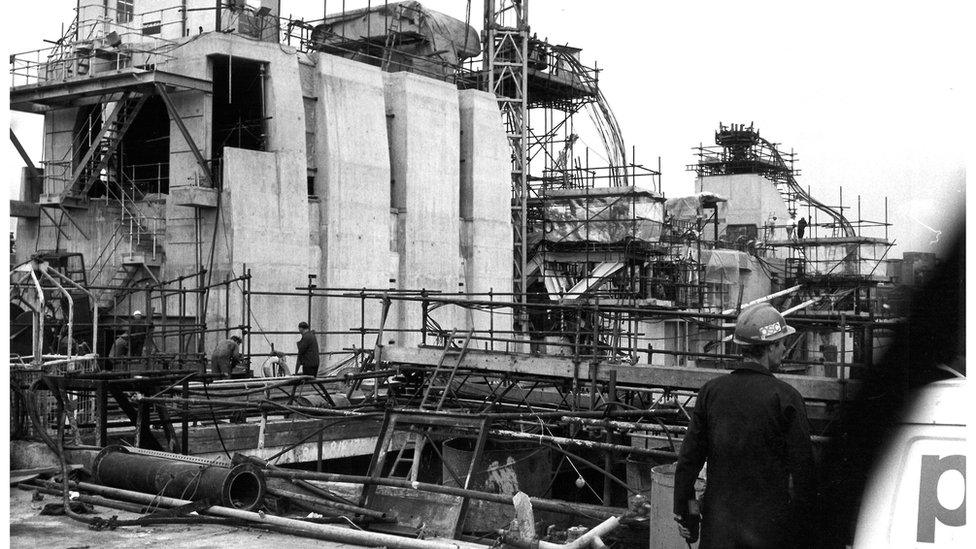
Construction took eight years and cost £535m - about £2.4bn in today's money
Mr Batchelor added that despite the success in protecting London over the past 40 years, the Environment Agency would "not rest on our laurels given the threat of rising sea levels", and would work with partners to review and decide on the right option for a new barrier by 2040.
Options include upgrading the existing barrier by 2070, so that the gates are not overtopped by rising seas and storm surges, or installing a series of flood storage "reservoirs" downstream.
The other options are a new barrier with a similar design to the current one, with moveable gates that lie flat on the riverbed when not needed to allow vessels to pass through and then swing up to close, or a permanent barrier with locks for river traffic.
The Thames Barrier currently has 10 steel gates that can be raised into position across the River Thames when needed.
Once raised, the main gates are as tall as a five-storey building and as wide as the opening of Tower Bridge. Each main gate weighs 3,300 tonnes.
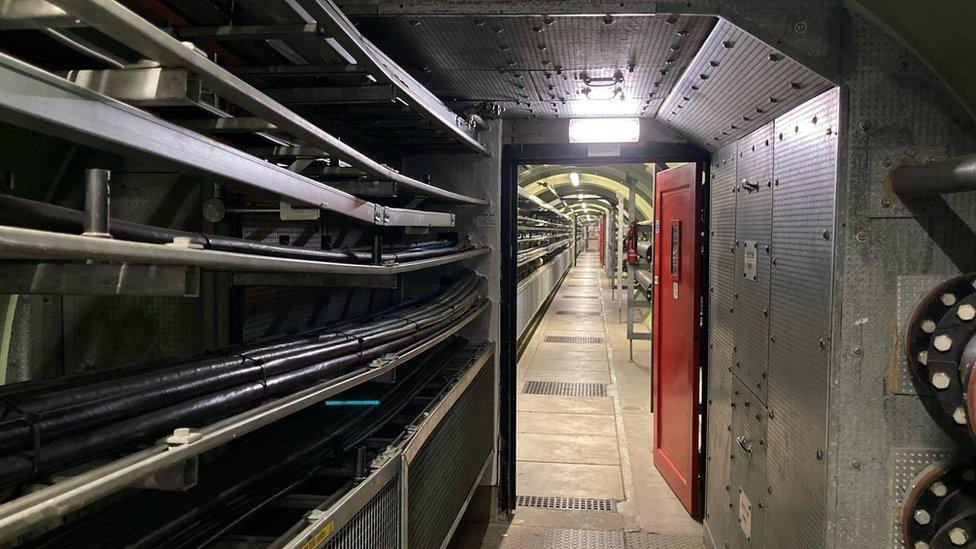
The barrier is made up of 10 gates, each weighing 3,300 tonnes

Listen to the best of BBC Radio London on Sounds and follow BBC London on Facebook, external, X, external and Instagram, external. Send your story ideas to hello.bbclondon@bbc.co.uk, external
Related topics
- Published17 May 2023
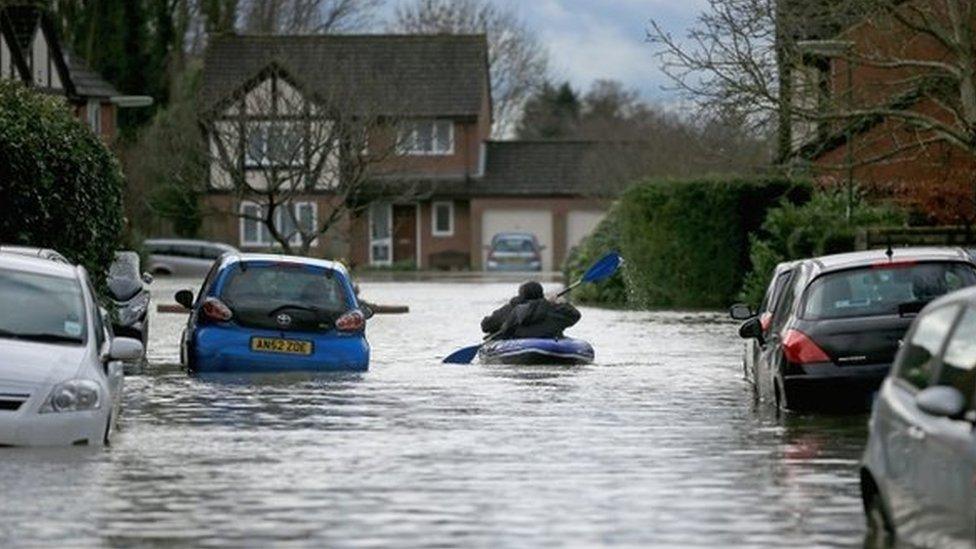
- Published11 February 2014
